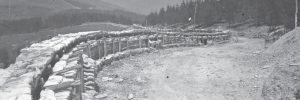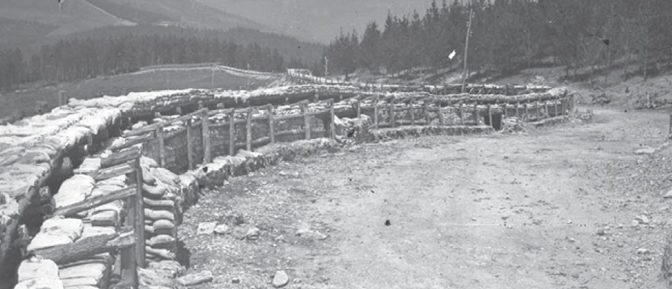“The best-laid plans of mice and men…” Well, one can argue that Bilbo’s Iron Ring, meant to protect the city from the advancing forces of Franco, wasn’t even the best of plans. Fraught with poor and antiquated ideas, it was then sabotaged as the main designer switched sides. In the end, the Iron Ring did little to delay the advance or to protect the city.

- The Iron Ring, or Cinturón de Hierro in Spanish and Bilboko Burdin Hesia in Basque, was developed by the Basque government during the Spanish Civil War. The network of tunnels and trenches was meant to be a defense against the incoming fascist forces. This network consisted of two rings that was supported by artillery. Construction began on October 8, 1936, with nearly 11,000 workers. The first fortifications were built in places around Bilbo including Urduliz, Artebacarra, Miravalles, Sodupe, Ciérvana, Lujua, and Lauquiniz. The total length of the network was some 80 kilometers, or about 50 miles.
- However, the Iron Ring was plagued with challenges from the beginning. The idea of trench warfare, prevalent during the First World War, was already antiquated by the time the Spanish Civil War started. The whole network was poorly designed and didn’t leverage any natural defense points. It was easily spotted from the air. Further, the fortifications were designed to be manned and held by some 70,000 troops, but in the end only 30,000 were available.
- Even more devastatingly, the engineer that designed the network, Alejandro Goicoechea, crossed lines in February 1937. Born in Elorrio in 1895, Goicoechea was a locomotive engineer before, and after, the war. He took with him plans for the Iron Ring that detailed its construction and the placement of all of those tunnels and trenches. To be fair, the fascist avian forces had already photographed the entire construction effort, so it isn’t clear that Goicoechea gave them much they didn’t already know. In any case, when the fascist forces did arrive, during the Battle of Bilbo, the fortifications fell within 2 days.
- Goicoechea was actually the second engineer placed in charge of building the Iron Ring. Before him, there was Pablo Murga. But Murga, who was known to have sympathies with the fascist, had written detailed plans about the fortifications that were found with the detained consul of Austria-Hungary, Wilhelm Wakonigg. Murga was removed from the project and executed on November 19, 1936.
- Today, you can walk along and explore some of the remnants of the fortifications. Archeologists are also trying to excavate the tunnels. Lately, police have had to deal with thieves that plunder artifacts from the Iron Ring.
Primary sources: Bilbao’s Iron Ring, Wikipedia; El Cinturón de Hierro by Imanol Villa, El Correo; Cinturón de Hierro de Bilbao, Wikipedia
Discover more from Buber's Basque Page
Subscribe to get the latest posts sent to your email.


